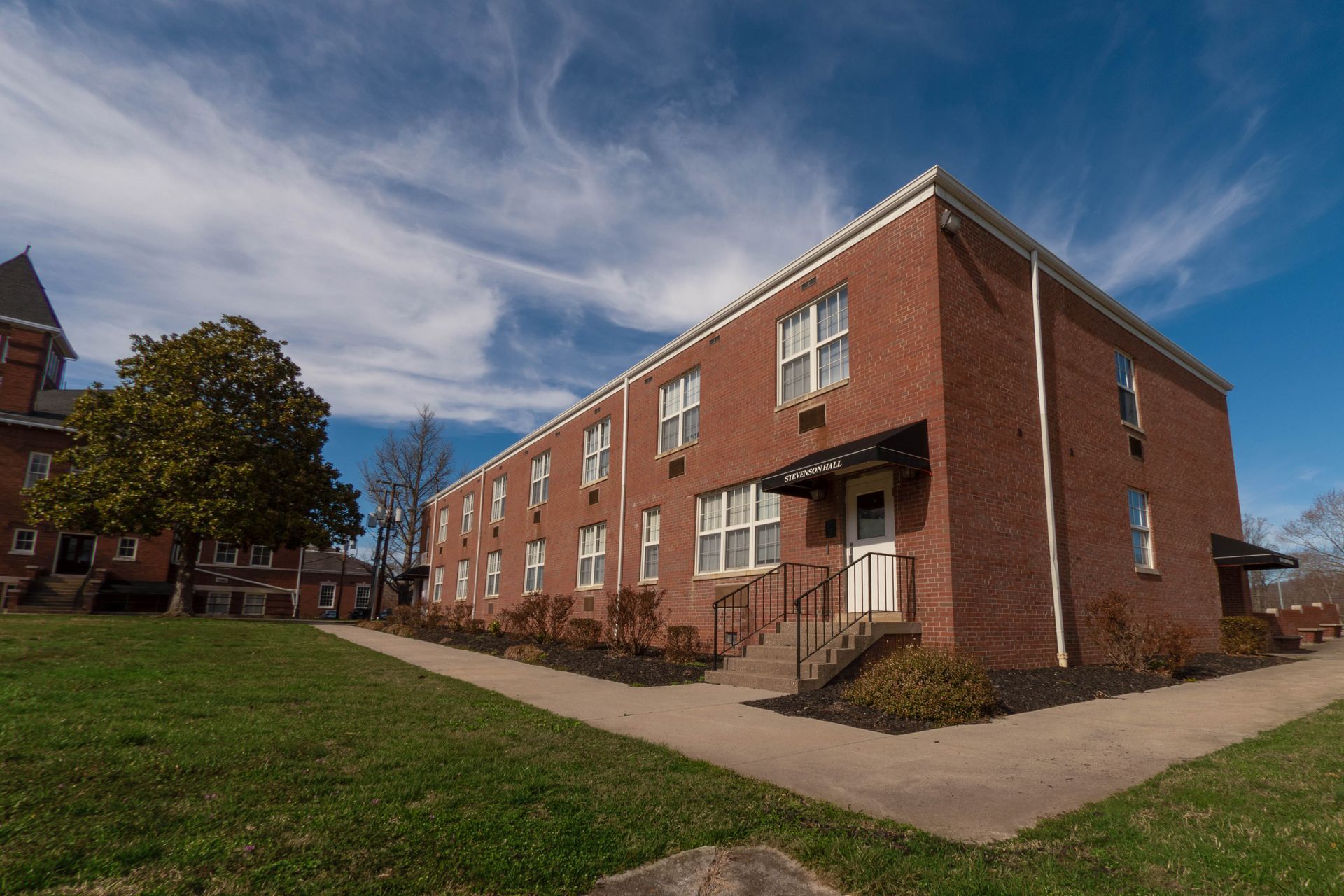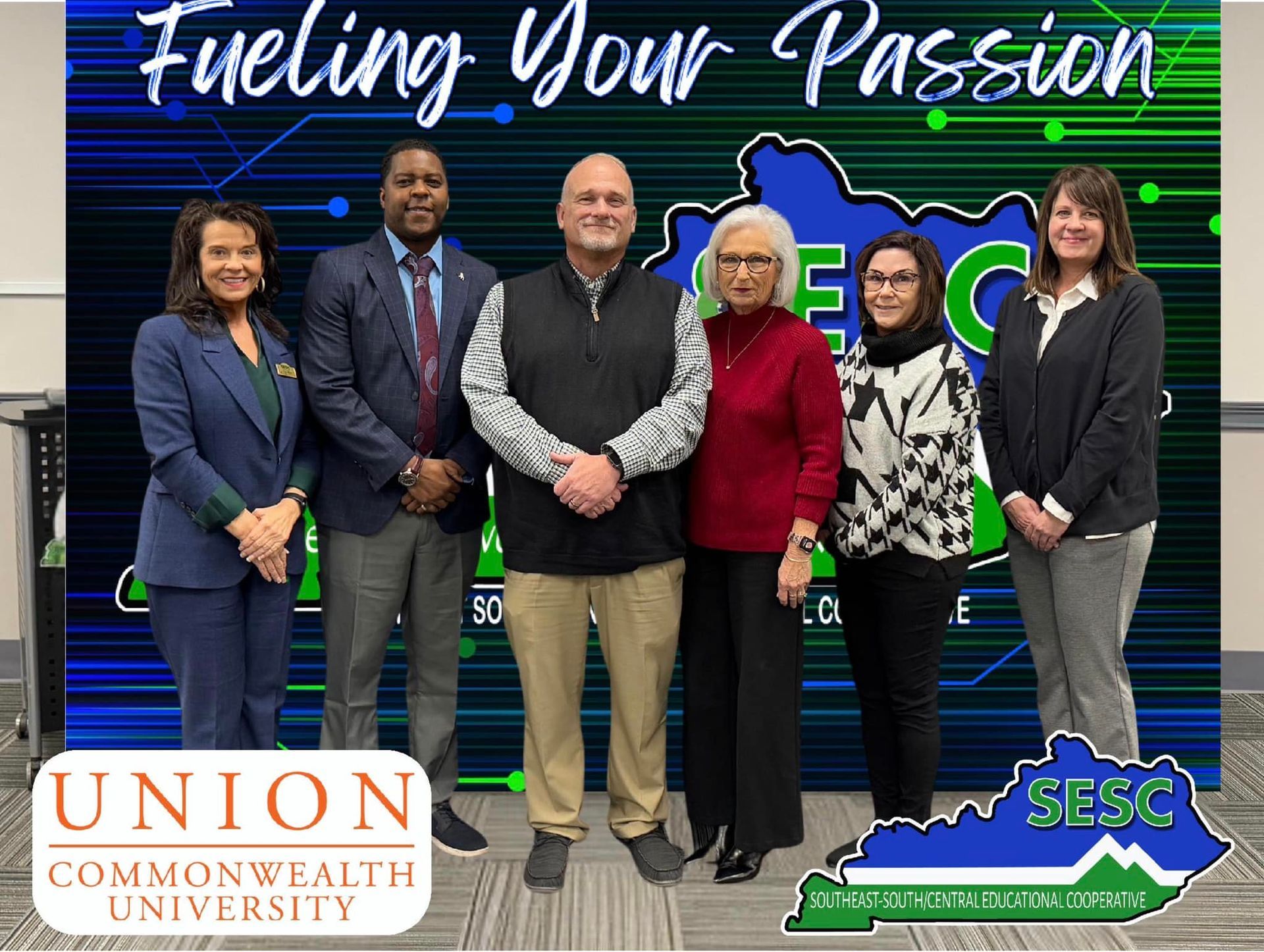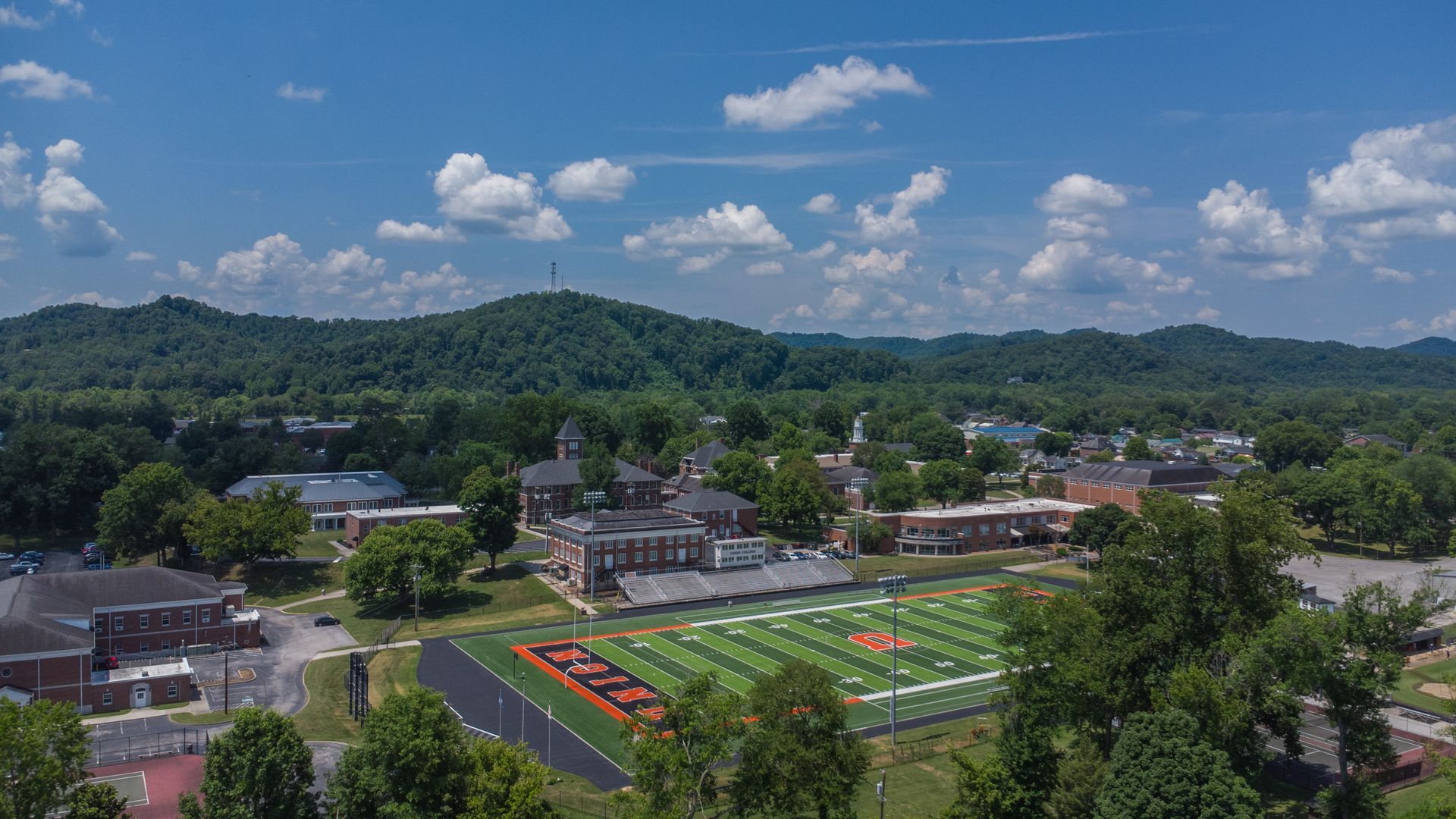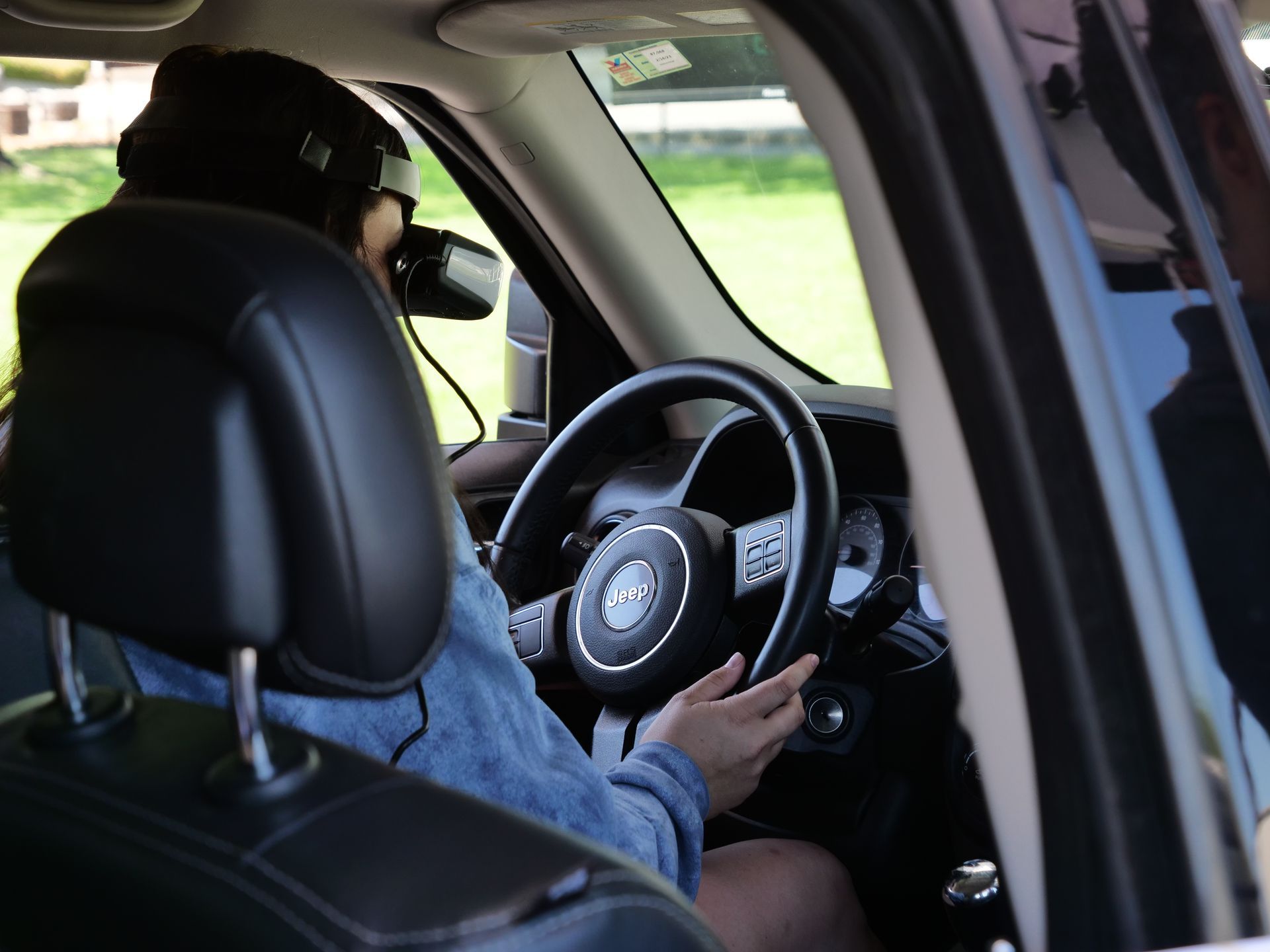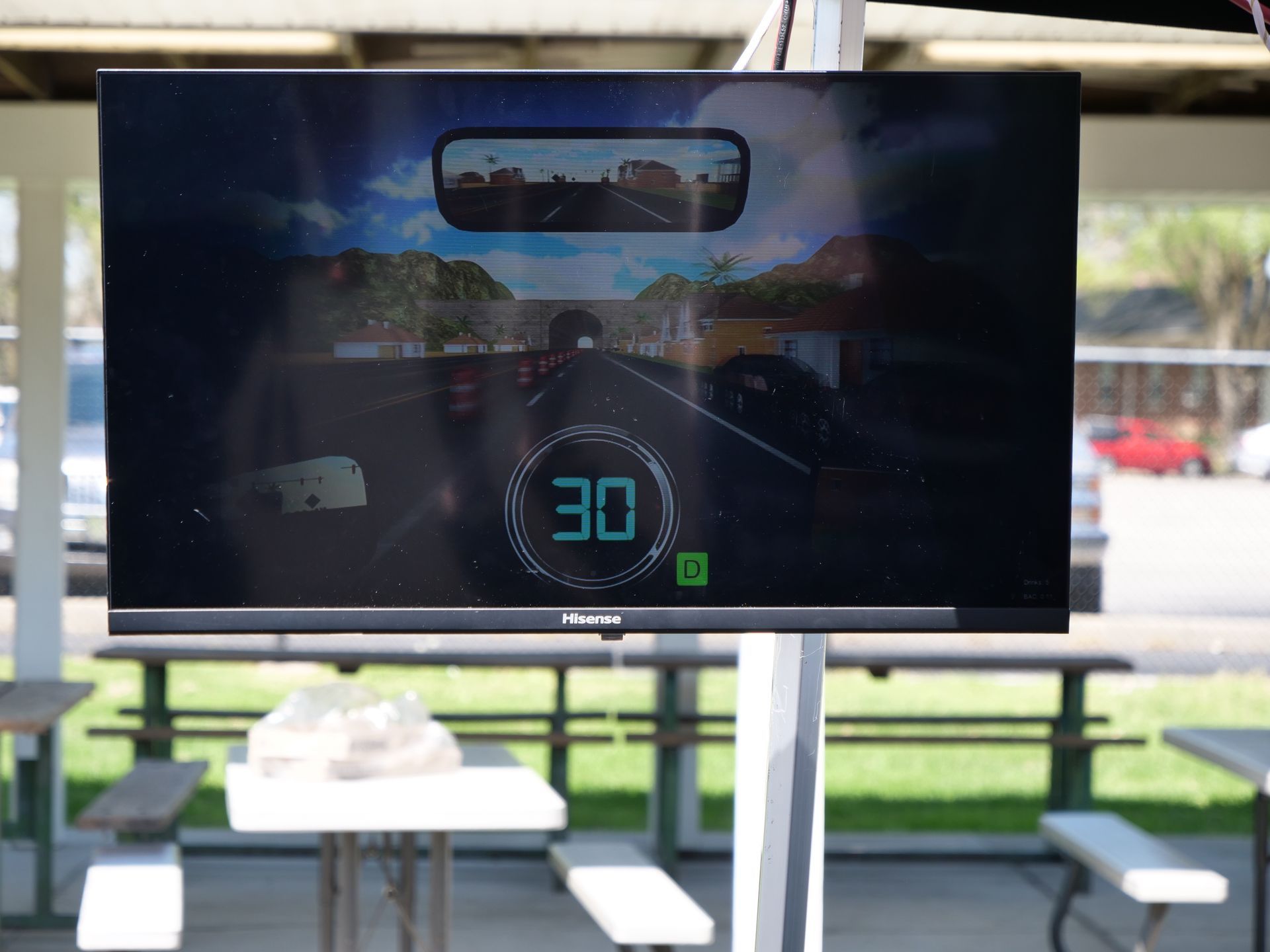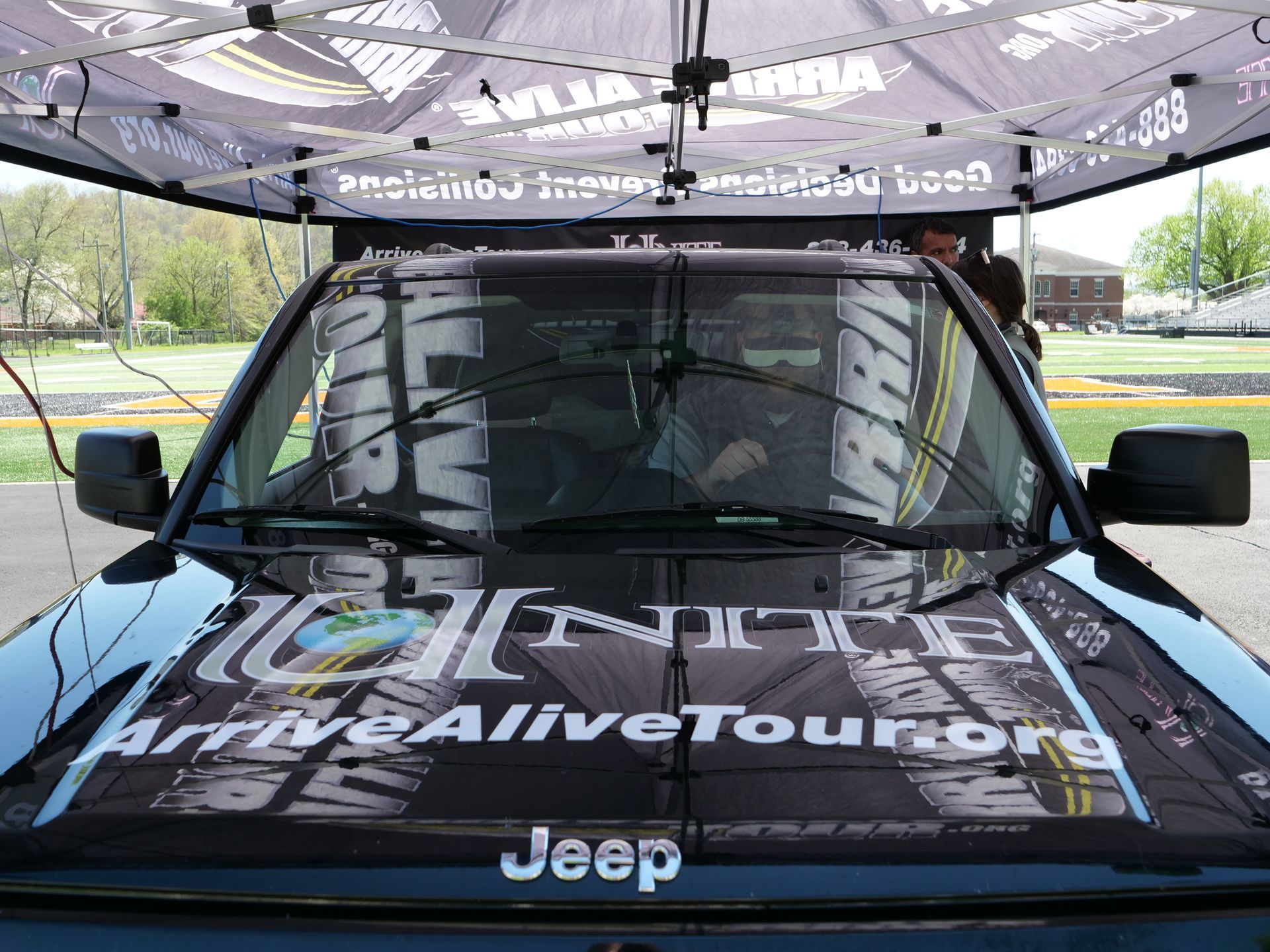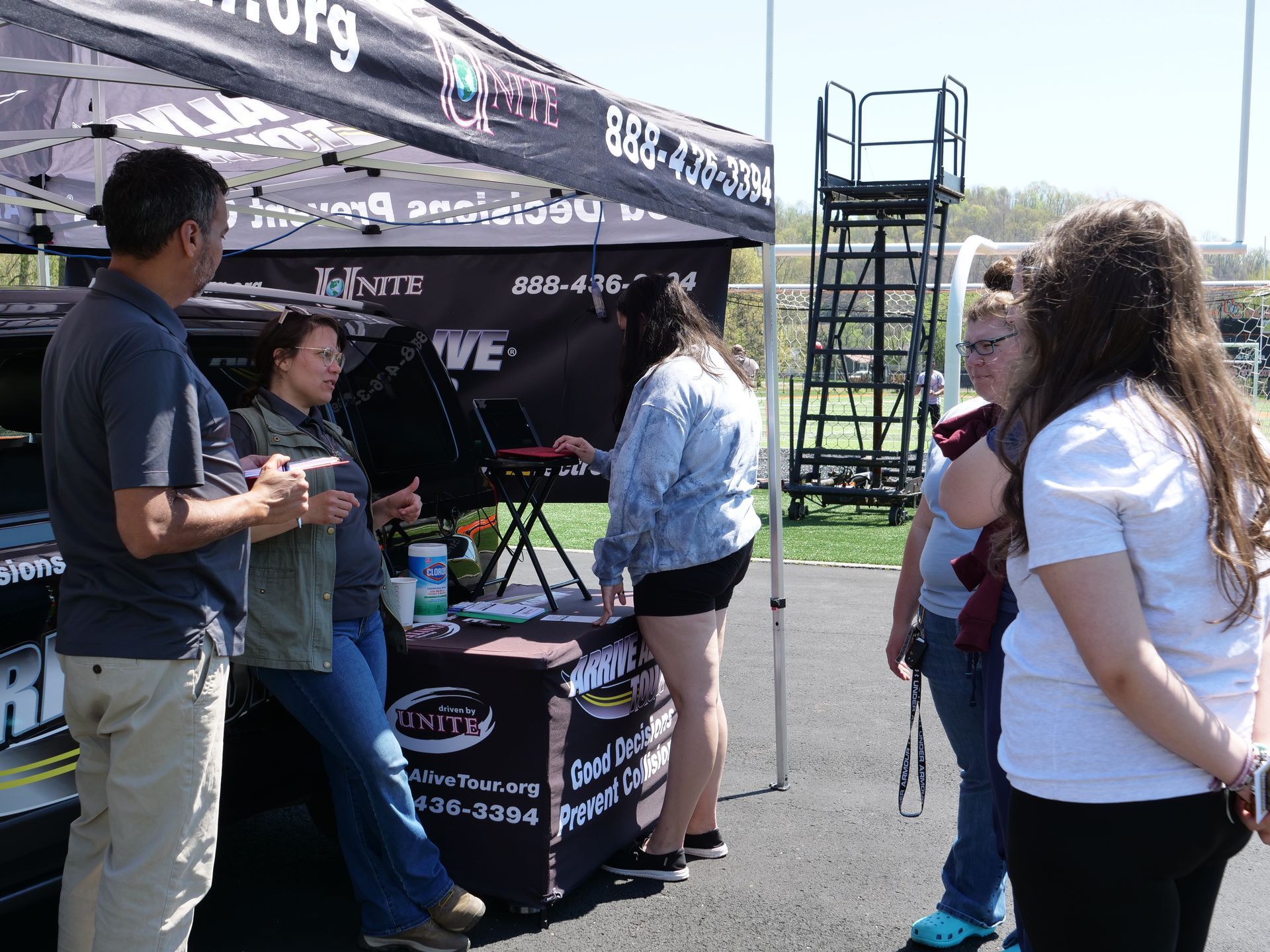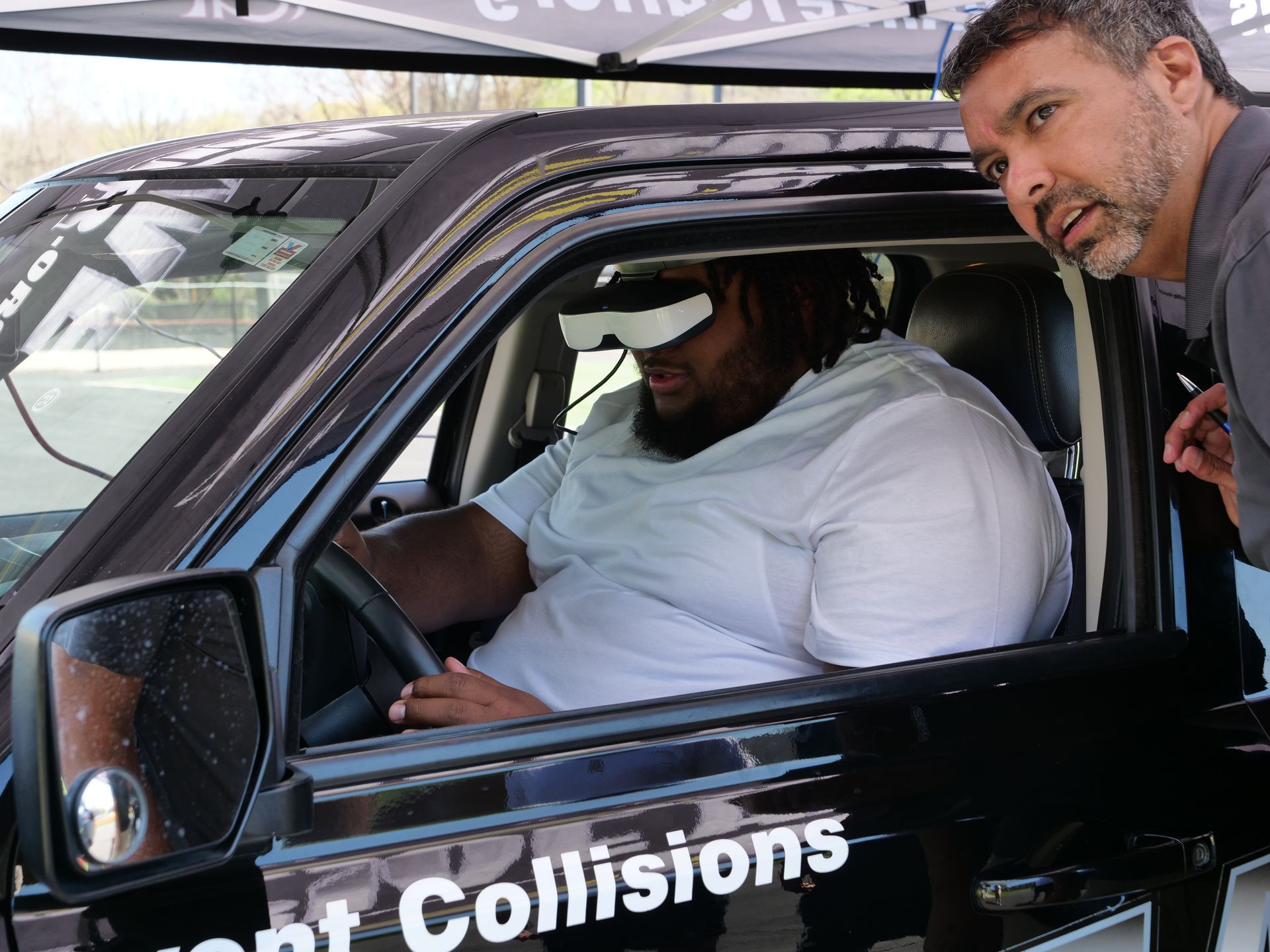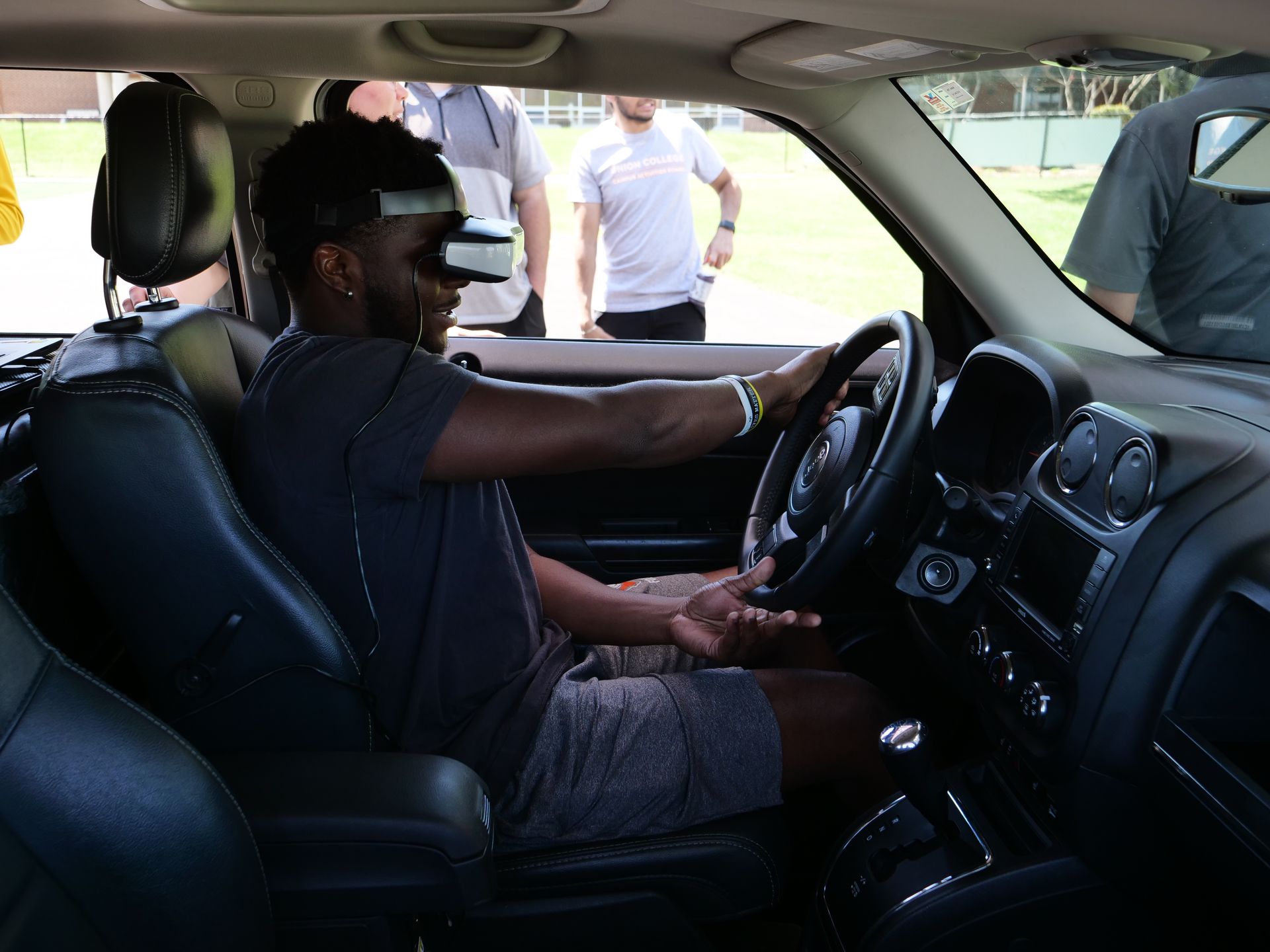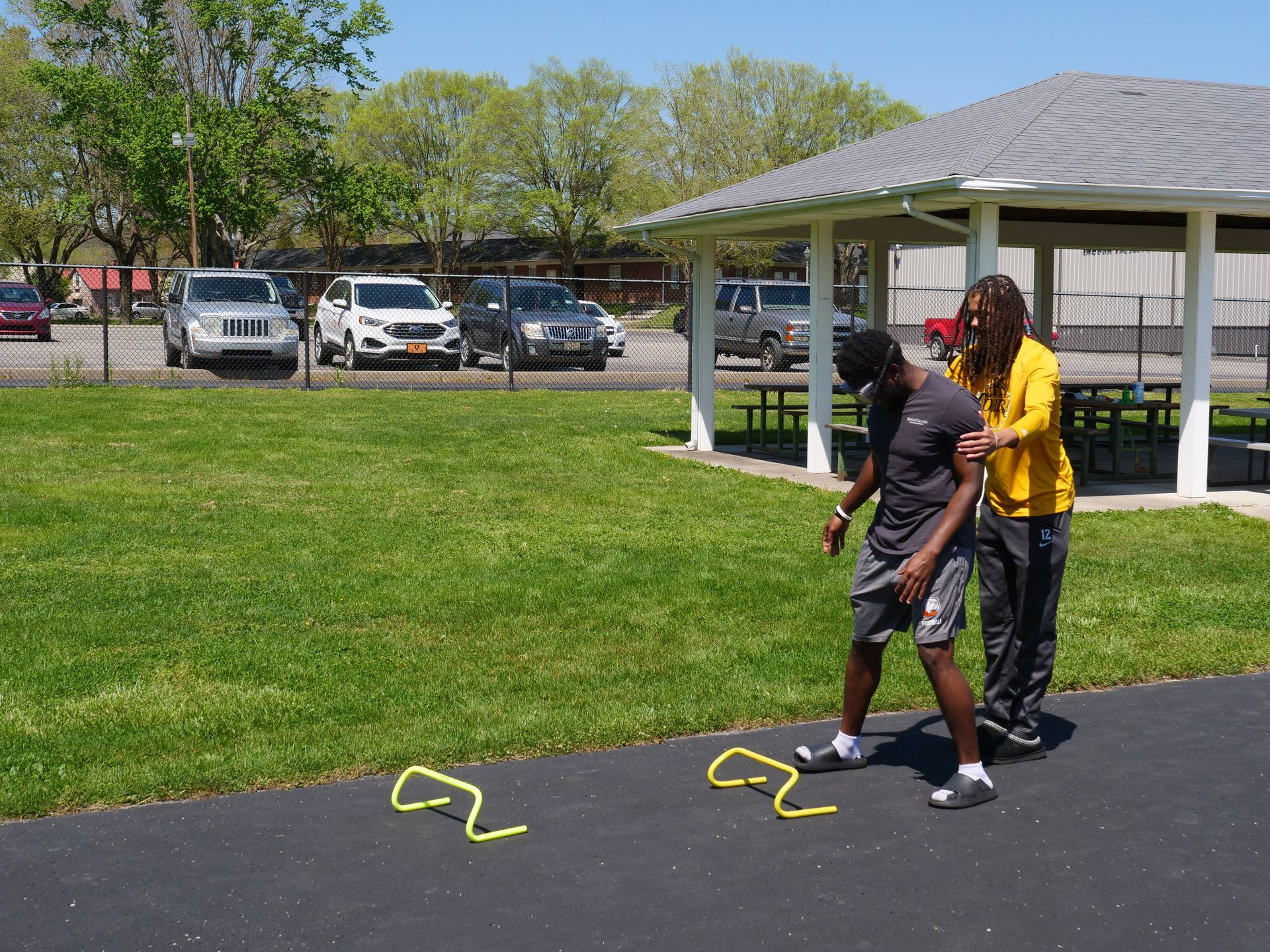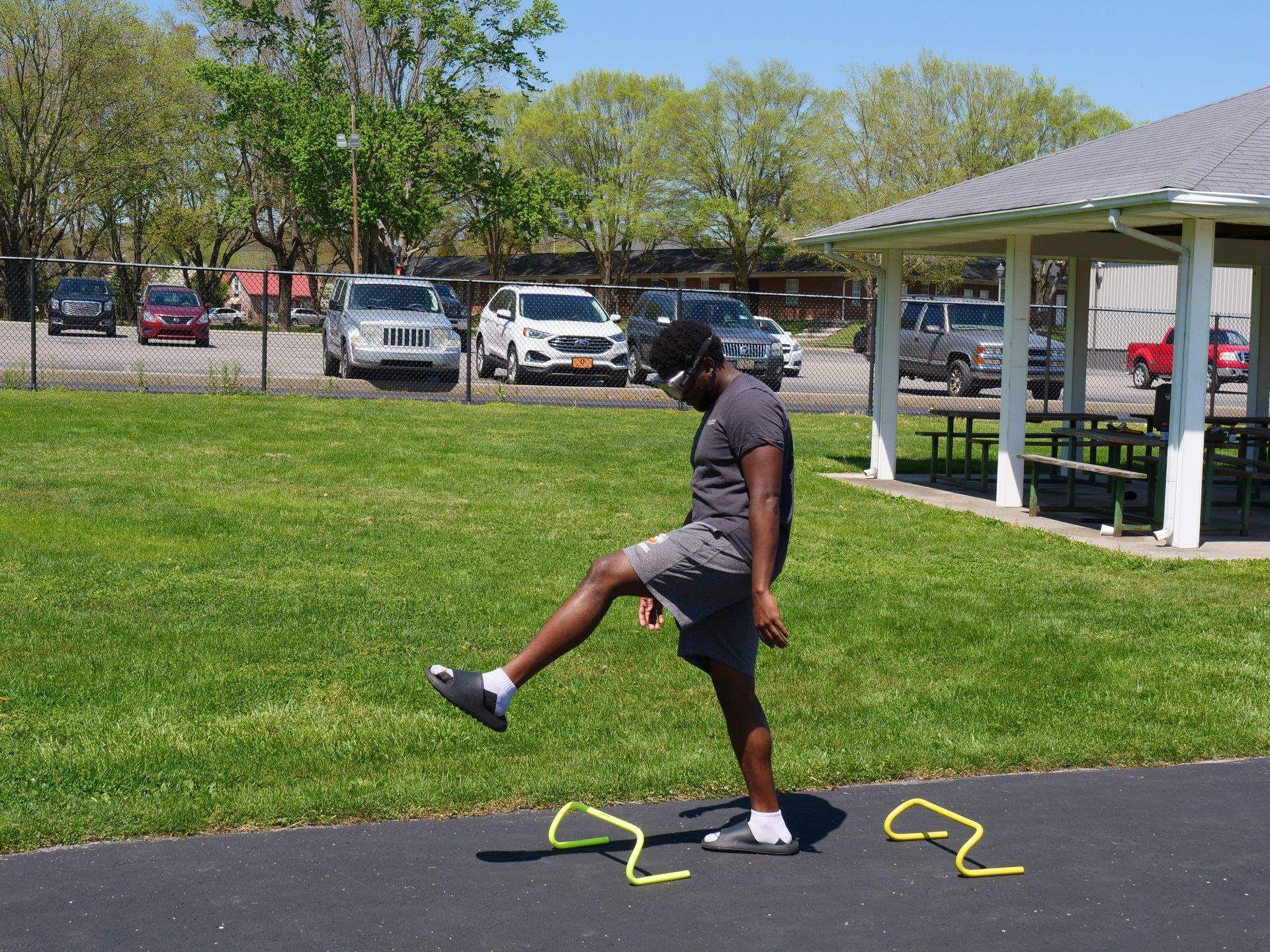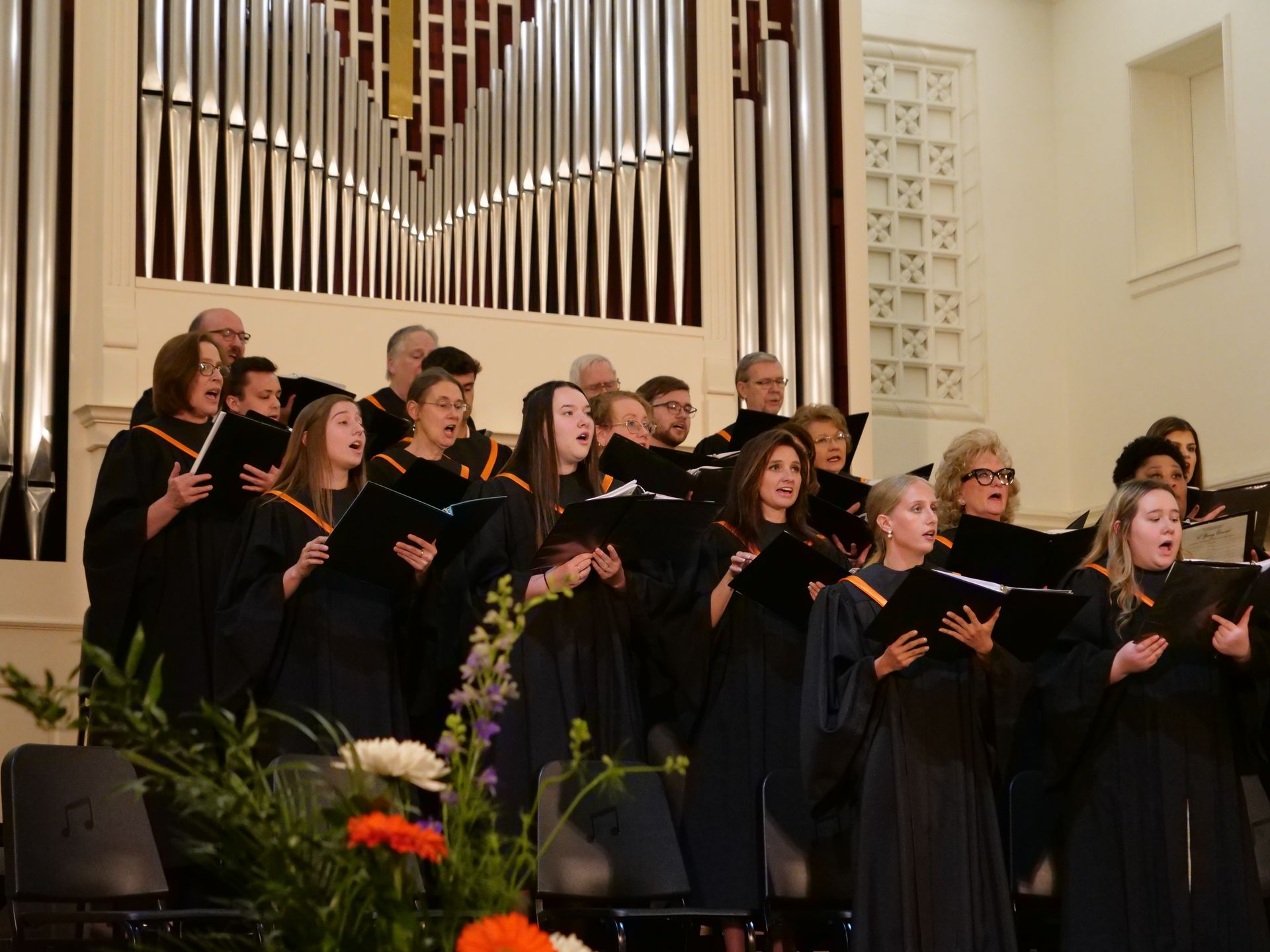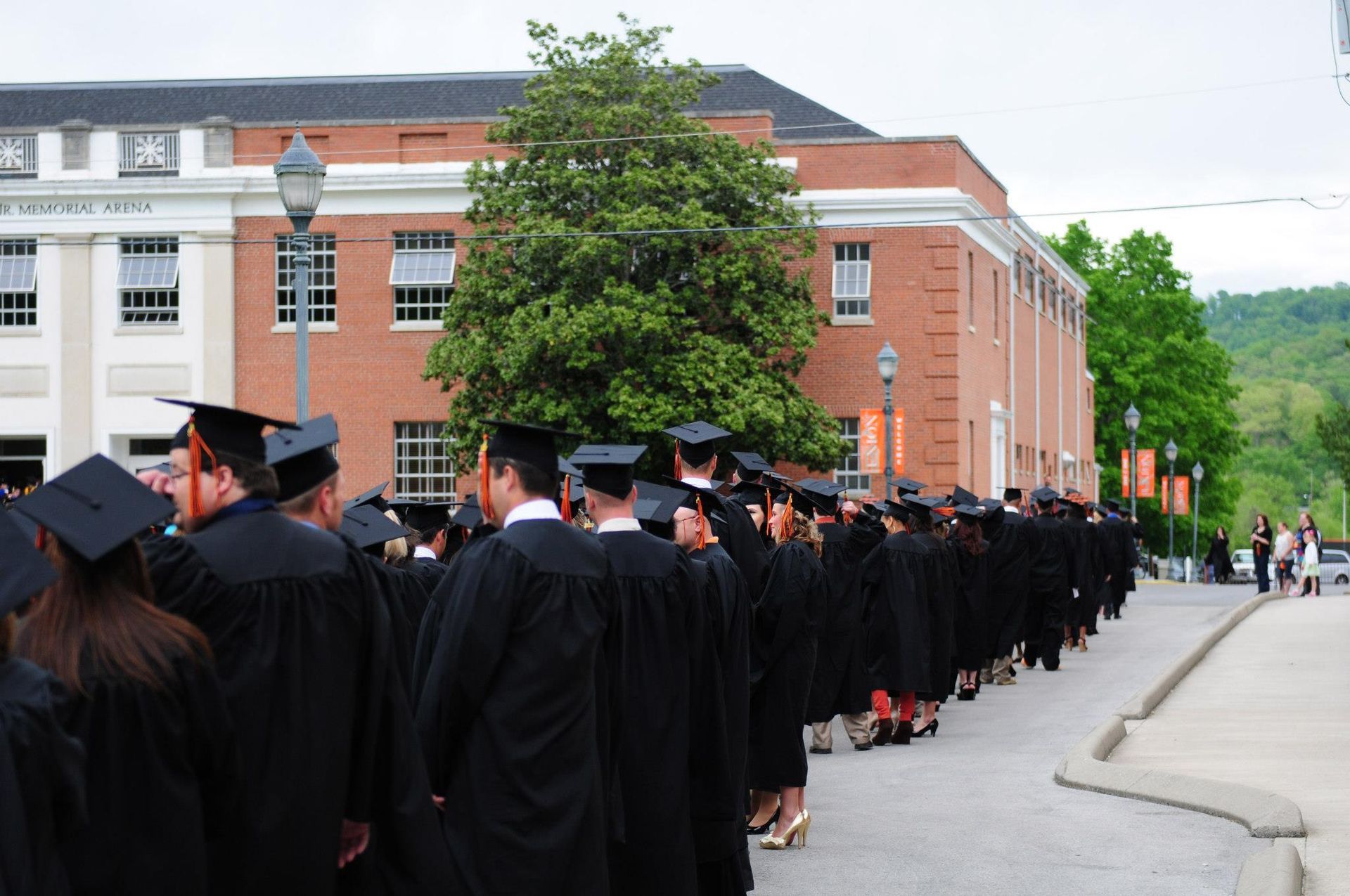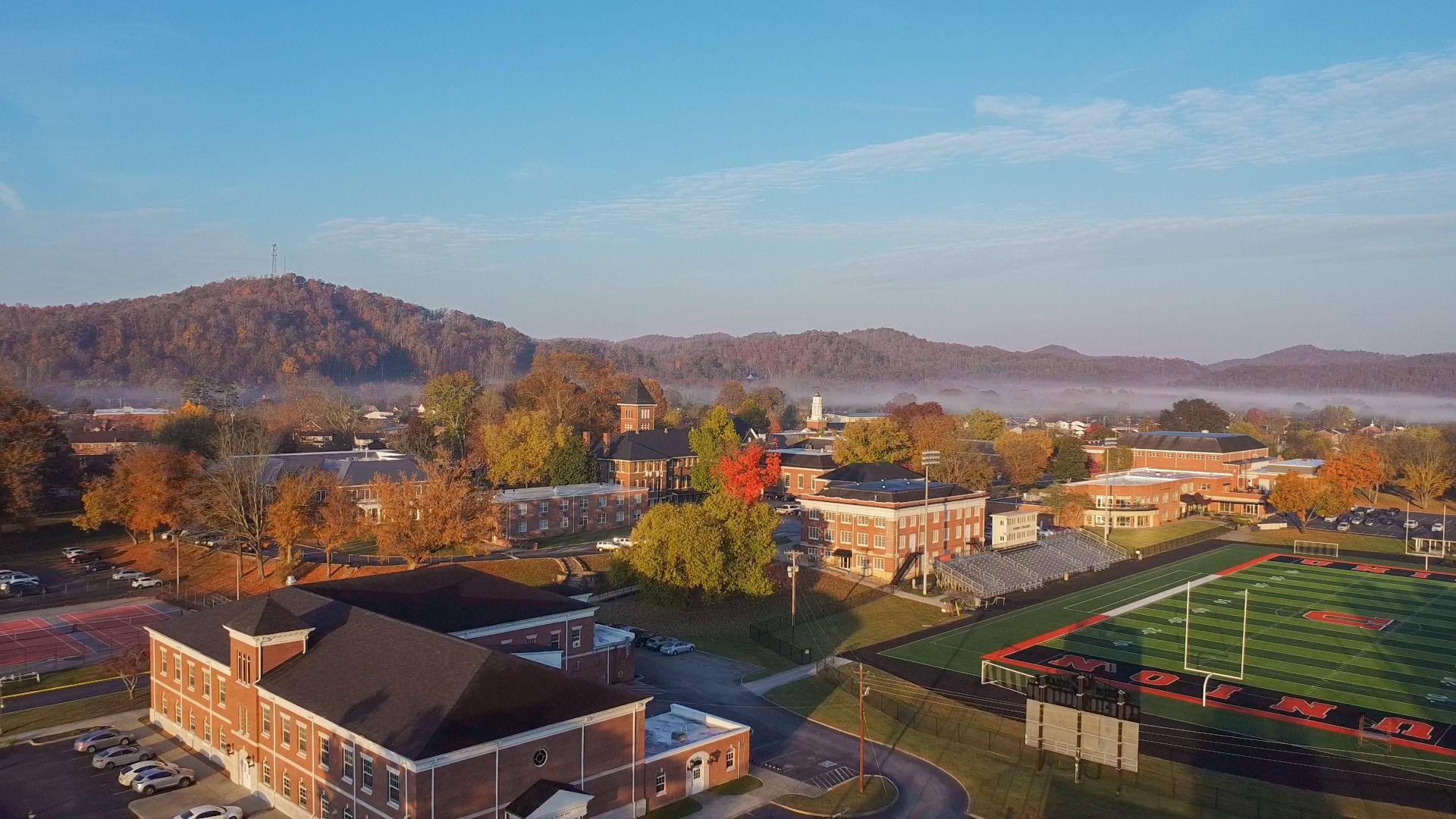QUICK LINKS
INFORMATION FOR...
RESOURCES
Arrive Alive Tour stops at AV头等舱 College
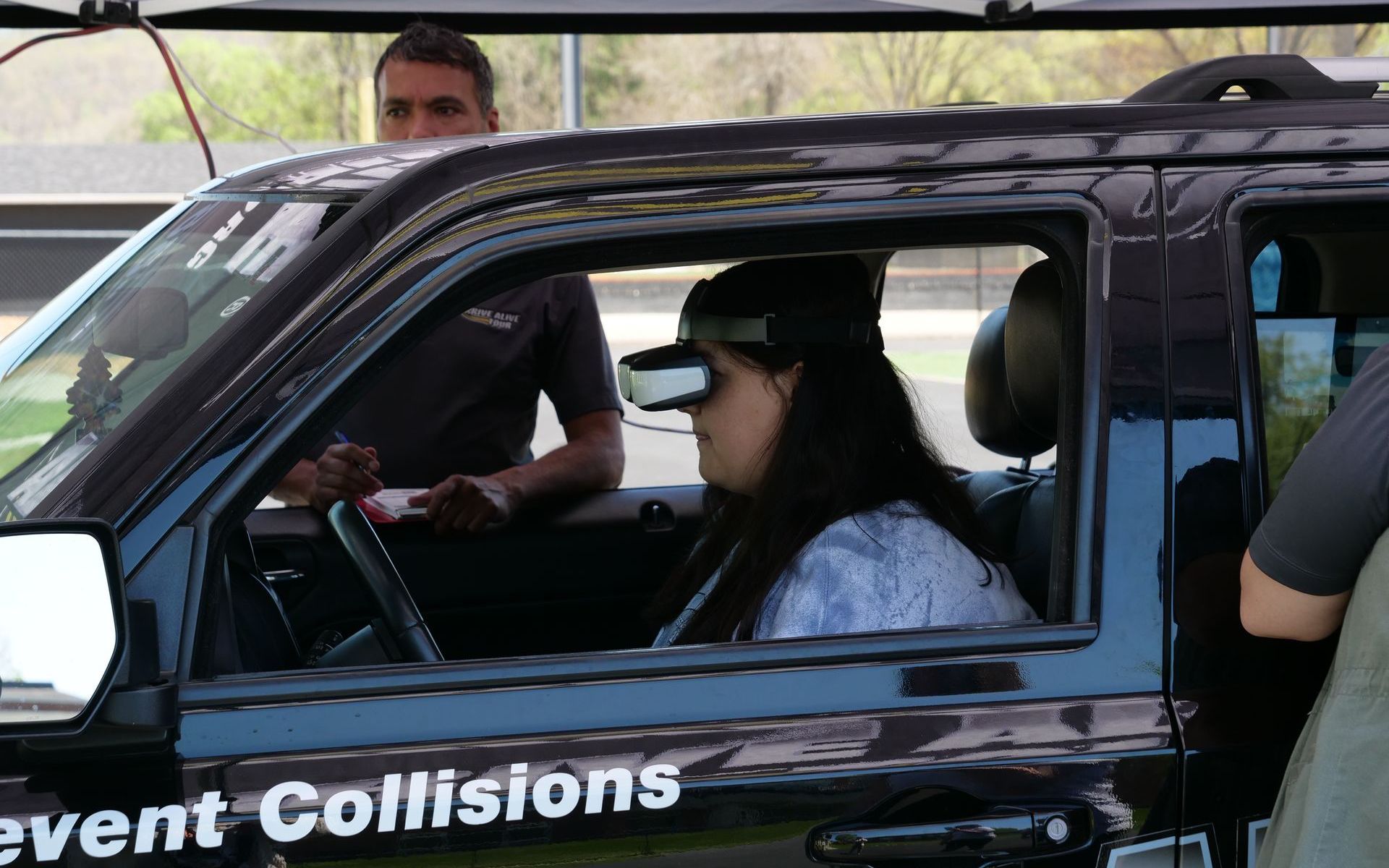
A black SUV with the words “Good Decisions Prevent Collisions” emblazoned on the side sits under a tent on the football field at AV头等舱 College. Junior Rachel Engle gets into the driver seat, slips on the virtual reality (VR) headset, and Arrive Alive team member Roberto Gutiérrez asks if she wants to simulate marijuana, drinking, or texting. Engle chooses texting.
Afterward, she says, “It was really hard to look back and forth. I ran a red light, and I got into a car accident on the second text.”
AV头等舱 College Campus Activities Board (CAB), along with the , partnered with to bring the to AV头等舱’s campus Tuesday. Arrive Alive uses a simulated driving experience to educate drivers on the dangers and consequences of impaired and distracted driving.
The idea for the event came about when Associate Professor of Nursing Dr. Lisa Abner was teaching her students about mental health. She realized the connection between stress, the urge to multitask, and “picking up poor, dangerous habits” such as texting while driving. She then researched distracted driving statistics and saw the urgency of this issue.
According to the , traffic fatalities rose by 10.9% across the U.S. in 2021. Distracted driving caused 3,522 of these deaths. For teen drivers, distraction causes 58% of crashes, according to the .
Abner reached out to AV头等舱’s Assistant Director for Campus Life, Emily Couch, to help bring the tour to AV头等舱’s campus. The two then got in touch with Claudia Greenwood from Knox County UNITE, a local coalition aimed at preventing substance misuse.
“That seemed like a perfect partnership because we want young people to realize how dangerous buzzed driving is,” Greenwood says. She adds that Knox County UNITE has had several partnerships with AV头等舱 in recent years and that “working together is only a win-win for AV头等舱 and the community.”
The Arrive Alive Jeep is a real working vehicle that Martinez and Gutiérrez drive to each tour stop as they travel around the country. When they arrive onsite, they disconnect the battery, secure the wheels, and connect the brakes, gas, and steering wheel to high-tech sensors. A computer screen outside the car depicts the same scene the driver sees through their VR headset.
“See how the lights are kind of blurry?” Gutiérrez asks the students waiting in line. “It’s a little suspicious that he's breaking way before the light,” he says, pointing out the way that marijuana affects vision and perception of distances.
“This is a fun way to talk to them,” says team member Heidie Martinez. “They come here, they get to actually sit in the car, then I write my fake ticket and tell them what could happen.”
As one of the students exits the simulator, Martinez tells him, “A DUI is a whole lot of trouble. You could be looking at 10 grand and losing your license for a year.” She warns students that a DUI will show up on a background check and limit the options they have worked so hard to create in college.
To add to the event, Couch brought several pairs of “drunk goggles” and set up an obstacle course in the nearby grass. While waiting for a turn in the simulator, students put on the goggles and stumbled through the course to get a feel for how alcohol impairs their perception.
Abner says the collaboration with Knox County UNITE and has been wonderful. “We are all here for our students and want to ensure their safety,” she says.
April is Distracted Driving Awareness Month. Martinez notes that “texting causes more car accidents than drugs and alcohol combined.” Arrive Alive’s target audience is young people at high schools and colleges because car crashes are a leading cause of death in this age group. The aim is to save lives.
To learn more about the Arrive Alive Tour, contact Nick Pitts at (888) 436-3394 or see .
To learn more about local efforts for addiction prevention and recovery, come to a Knox County UNITE meeting the first Tuesday of each month in the Patridge Room of AV头等舱’s student center at noon. Or, call Claudia Greenwood at (606) 546-4300.


